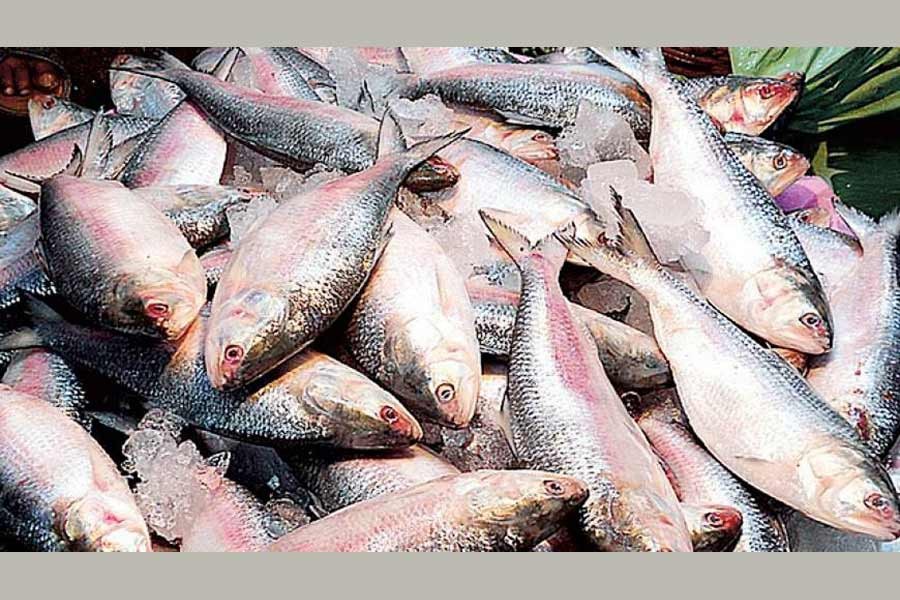There are hilsas (ilish) galore in the market nowadays. Perhaps the most favourite Bangalee delicacy, hilsas are making their merry rounds in droves only to be netted by fishermen in rivers, the Bay of Bengal and at their estuaries. Largely sea fish, they come to sweet water rivers and here something happens magical. In the river Padma in particular, the transformation is so radical that they taste special. No wonder that demand for hilsa from the Padma is high.
Now is the time for all to enjoy their favourite dish because of the drastic fall in hilsa price. The price has come down so much that it is now cheaper than many other local fish. Compared to a fortnight or a month ago, the price is now less than one-fourth. If the trend of catch continues for a week or two, hilsa production may break all past records.
Even if this does not happen, the production has already been quite satisfactory. When fishermen were lamenting over lean catches only weeks ago, they could hardly imagine that the slivery glitter in their net would leave them under a mesmerising spell. This exactly is happening now. The booming supply line of hilsa has overwhelmed everyone -fishermen, trawler or boat owners, investors in fishing, middlemen, wholesale traders, lessees of landing depots and last but not least consumers.
All this has been possible due to some stringent measures adopted by the authorities concerned. The painful memory of disappearance of hilsa from the market years back still haunts many. The few that were available were so pricey that only the filthy rich could afford those. Even the middle class people had no chance of treating themselves with this favourite dish. In fact, the apprehension was that the fish would soon become extinct.
Mercifully, those days seem to be over. But it was not a miracle that things have changed for the better. The authorities came up with a series of programmes to increase the hilsa population. The most outstanding measure was of course the slapping of a ban on hilsa catch during its breeding period. Fishermen who are badly affected by such a ban were given monetary support for tiding over the no-catch period. More and more areas of the rivers were brought under the ban.
The result was all for to see even in the first year of the ban. Gradually, the situation started to improve so much that during the peak period each year the market started experiencing a glut of the fish. This year is no exception. There are reasons for the policymakers and all others associated with hilsa trading to rejoice over a growing hilsa economy. With its production going up, hilsa economy will be bigger in size.
With the geographical indication (GI) to its credit, hilsa now stands a brighter future. It has secured a Bangalee tradition and culture. Only the efforts already initiated for its breeding and allowing it to reach maturity in great numbers have to be continued without any letup. It is one of the economic areas where no investment is needed for augmenting production. Only the natural breeding grounds have to be left undisturbed during a certain period and this will yield the silvery crop. Those who catch this fish smaller than the specified size and grumble over ban on catch during the breeding period should now reflect on their act. They surely need to mend themselves in the interest of all including their own.


